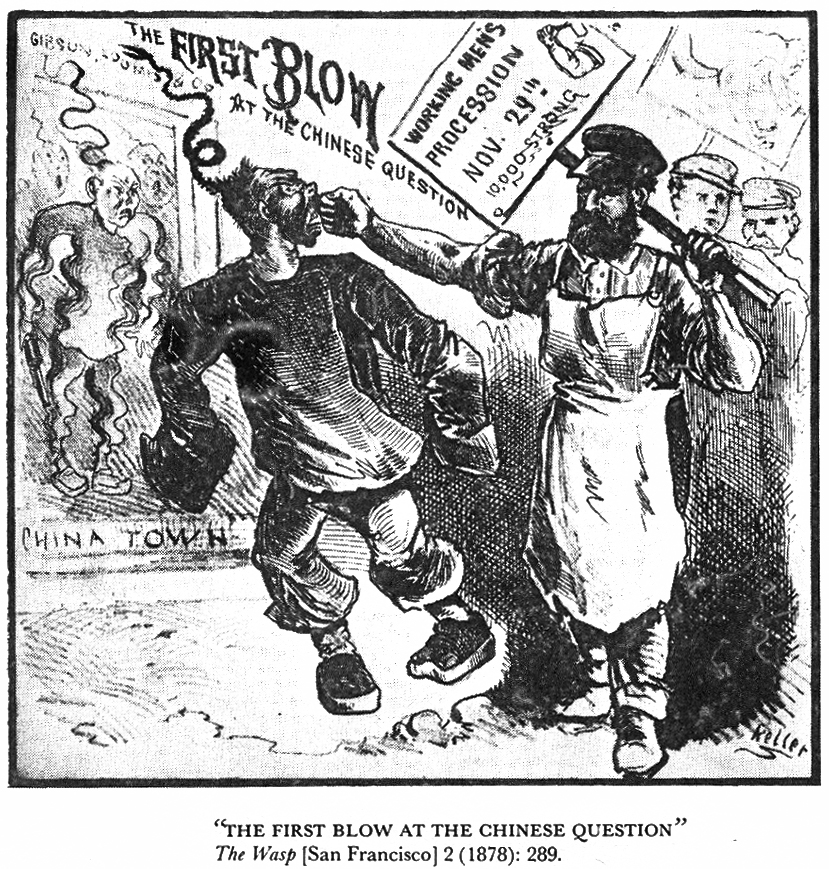In her introduction, Madeline Hsu is very critical of the historiography on Chinese immigration that dominated the field into the 1970s because these works essentially subscribed to assimilation models. They concerned themselves either with “explicating passage of the Exclusion laws against what was then seen as a minuscule minority in the United States or struggling to explain the unassailability of Chinese.” White and Chinese American academics were both responsible for this work, but Chinese American scholars also occasionally emphasized “the extent to which they had indeed assimilated and contributed to American life” (Hsu, 7). Hsu argues, much in the way Donna Gabaccia has, that this approach still empowers the dominant immigrant paradigm by encouraging assimilation as an end goal or something that was achievable. Instead, Hsu’s work reflects upon the complexities of the immigrant experience by examining how the migrants maintained multiple identities through a transnational existence.
Following the footnotes in Hsu’s book led me to a list of examples that represent the early approaches to Chinese American studies. Therefore, I decided to read up on some of these works by skimming through the books I could find and reading book reviews of them.
I first looked up Mary Roberts Coolidge’s Chinese Immigration. I did a double take when I realized it was published in 1909 and can see that it definitely qualified as an example of an “early approach.” Even a review of the book in the Political Science Quarterly from March 1911 was proof of this, with the opening line stating:
“The American people cannot view with pride the history of their dealings with backward races…through the patient industry of Mrs. Coolidge, we have authentic and cumulative proof that our treatment of the yellow race is on the same level with our ignominious abuse of the red, black, and brown races” (p. 149). Clearly, these words are a reflection of the old paradigm, which may have allowed historians to recognize and sympathize with the difficulties that immigrants faced but still view them as “backwards.”
The Unwelcome Immigrant: The American Image of the Chinese (1974) by Stuart Creighton Miller further works within a view of the Chinese as the victims who faced bad treatment from Americans who – as his argument goes – had been embracing negative views of the Chinese based on the encounters of diplomats, missionaries, and traders in China. He also notes the role of labor conflict in perpetuating these stereotypes after Americans felt threatened by Chinese migrant workers. Though conceptually limited, this was important work. However, a review in the journal Contemporary Sociology by Ivan Light from UCLA features a disturbing defense of the Americans who produced “unfavorable images” of the Chinese, which may have been “in harmony with realities” such as the “organized vice, filth, despotic government, and slavery” that he thought characterized the Chinese colonies (799). Despite the social issues among the Chinese community, the fact that people were writing about them this way twenty-five years before Hsu’s book shows how far the historiography came in that short time.

Another book, Elmer Clarence Sandmeyer’s The Anti-Chinese Movement in California (1939), similarly conceived of these migrants of victims who faced prejudice from other American laborers who feared competition. There are a few more books that Hsu cites that I want to read through next week, and I can tell that they all work within this traditional approach toward Chinese migration, and often orientalized their subjects too. Reading these accounts make me appreciate Hsu’s transnational method much more, because the Chinese migrants are more three dimensional, real human beings through her depictions of the community.
Articles linked above:
J. R. Commons, “Review of Chinese Immigration. by Mary Roberts Coolidge,” Political Science Quarterly , Vol. 26, No. 1 (Mar., 1911), pp. 149-151.
Ivan Light, “Review of The Unwelcome Immigrant: The American Image of the Chinese, 1785-1882 by Stuart Creighton Miller” Contemporary Sociology , Vol. 5, No. 6 (Nov., 1976), p. 799.

